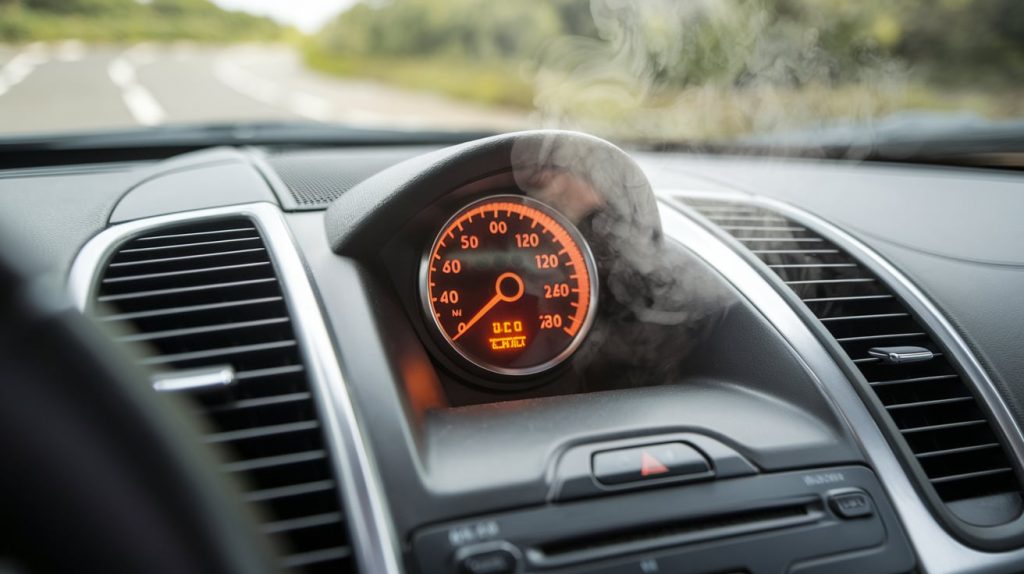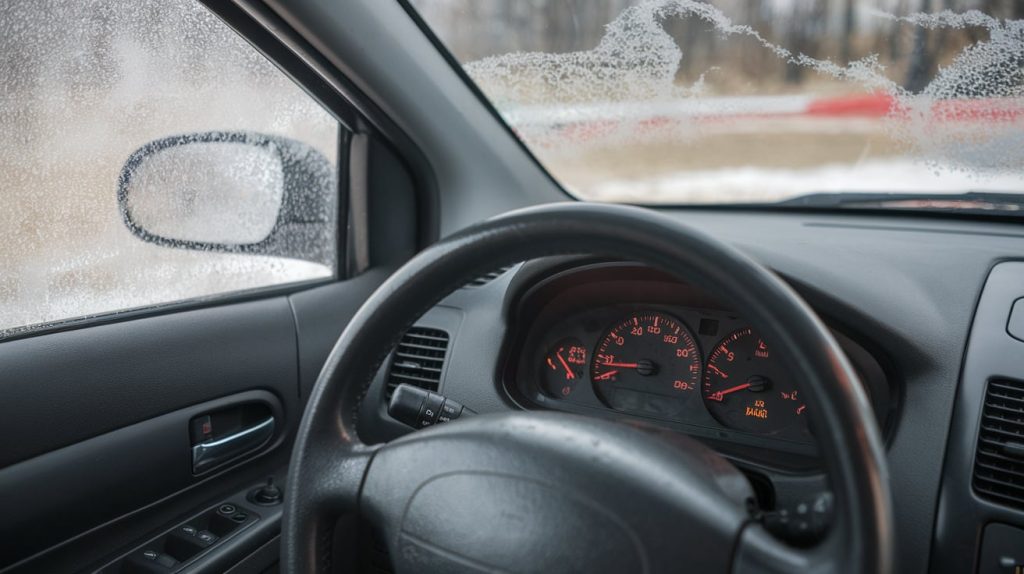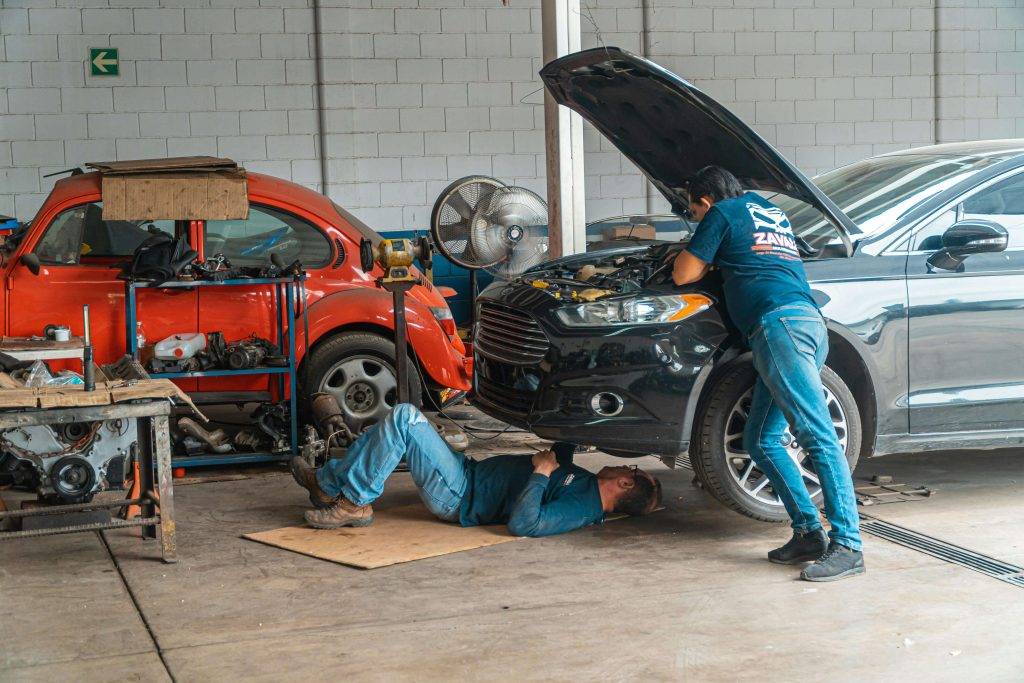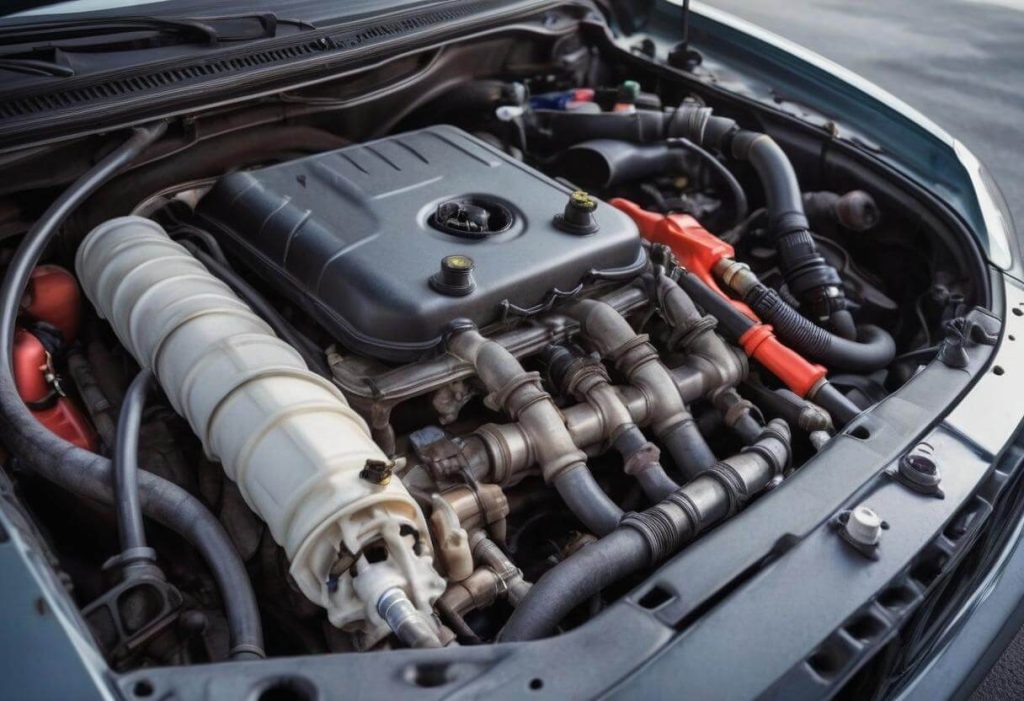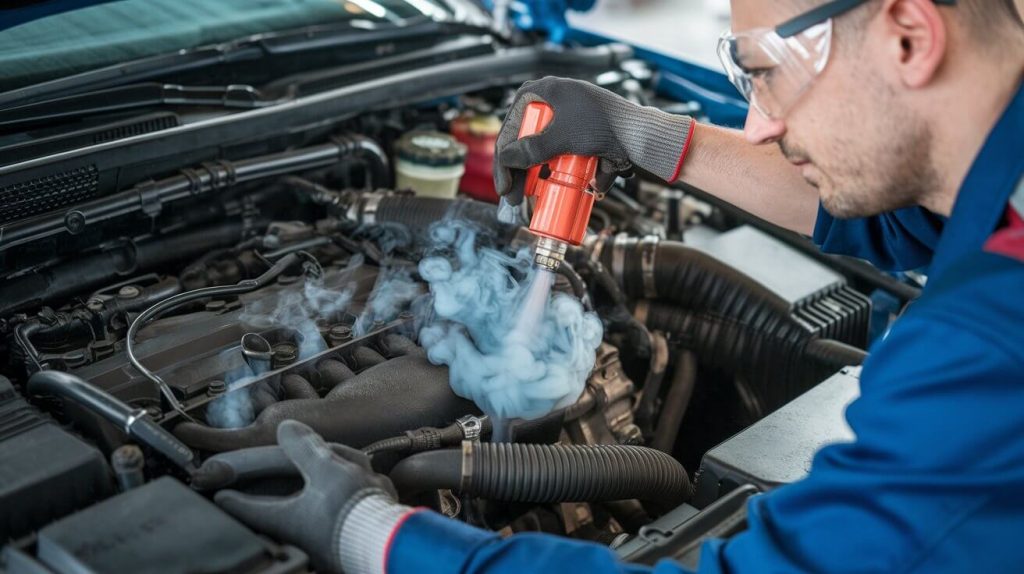Why Bad Thermostat Symptoms Matter! Your vehicle’s thermostat plays a crucial role in maintaining the optimal engine temperature. It controls the flow of coolant to keep the engine from overheating or running too cold, both of which can lead to significant problems. But when your thermostat starts to fail, it can cause a range of bad thermostat symptoms that may seem minor at first but can escalate quickly.
Ignoring bad thermostat symptoms could result in engine overheating, poor fuel efficiency, or even engine failure costly issues that are often avoidable with timely intervention. If your thermostat is malfunctioning, it may lead to uneven heating in the cabin, erratic temperature gauge readings, or even the engine running too hot. All of these are signs you can’t afford to ignore! Don’t wait until your vehicle stops running altogether. Identifying bad thermostat symptoms early can save you from the frustration and expense of more severe engine damage. Stay vigilant and keep your car running smoothly by addressing thermostat issues at the first sign of trouble.
What Is a Thermostat?
A thermostat is a tiny but essential part of the cooling system of your car. The coolant flow between the engine and the radiator is managed by this temperature-sensitive valve. The thermostat keeps your engine at the ideal temperature by controlling its temperature. This keeps your engine from overheating or running too cold, both of which can impair the performance of your car.
Thermostat’s Role in Maintaining Engine Temperature
The thermostat plays an essential role in keeping your engine at the right operating temperature.
- Regulates Engine Temperature: The thermostat ensures the engine stays at the optimal operating temperature.
- Closed When Engine is Cold: When the engine is cold, the thermostat remains closed to help the engine warm up quickly.
- Opens at Optimal Temperature: Once the engine reaches the correct temperature, the thermostat opens, allowing coolant to flow through the engine.
- Absorbs Excess Heat: The coolant absorbs excess heat, helping to maintain a consistent engine temperature.
- Prevents Overheating: By controlling the coolant flow, the thermostat helps prevent the engine from overheating.
- Promotes Engine Performance: Maintaining the right engine temperature ensures better fuel efficiency and smoother operation.
If the thermostat malfunctions or gets stuck, it can disrupt this process. A bad thermostat can cause the engine to overheat or run too cold, both of which negatively affect fuel efficiency, engine health, and performance. Additionally, it can impact cabin heating, as a malfunctioning thermostat may prevent the engine from reaching the required temperature to produce warm air for the vehicle’s heater.
Common Bad Thermostat Symptoms
If your vehicle is showing signs of trouble, it could be due to a faulty thermostat. Here are the most common bad thermostat symptoms you might encounter:
Engine Overheating
An engine that has a thermostat locked in the closed position may have major problems. Proper coolant flow through the engine is impossible when the thermostat isn’t opening as it should.
Signs of engine overheating due to a bad thermostat:
- Rising temperature gauge: The gauge shows unusually high temperatures, signaling that the engine is running too hot.
- Steam or smoke from the engine: You may notice steam or smoke coming from under the hood as the engine overheats.
- Warning lights: The dashboard may display the check engine light or an overheating warning light.
- Burning smell: A burnt coolant odor may indicate that the engine is overheating, potentially damaging components.
If you notice your engine consistently overheating, this could be a major sign of a bad thermostat.
Cold Air Blowing from the Heater
The heating system in your car may also be impacted by a broken thermostat. The engine cannot reach the required temperature to generate warm air for the heater if the thermostat does not open. As a result, throughout the winter months, you could feel uncomfortable when cold air blows from the heater.
Signs of cold air from the heater due to a faulty thermostat:
- Cold air blowing from the heater: Even after the car has been running for a while, the heater blows cold air.
- Lack of warmth in the cabin: The engine may not be able to produce enough heat, resulting in a consistently cold cabin temperature.
- Engine running too cool: A thermostat that’s stuck open causes the engine to run colder than normal, affecting heater functionality.
If your vehicle’s heater isn’t working properly despite running the engine for a while, a faulty thermostat might be the culprit behind the bad thermostat symptoms. Cabin comfort can also be affected by AC issues. Learn more in our blog on car AC repair services in Dubai.
Erratic Temperature Gauge Reading
A thermostat problem may be the cause of your car’s temperature gauge’s oscillations or erratic readings. The engine may occasionally overheat or run excessively cold due to a malfunctioning thermostat that opens and closes on its own.
Signs of erratic temperature gauge readings caused by a bad thermostat:
- Fluctuating temperature gauge: The gauge may spike suddenly or drop unexpectedly, showing inconsistent engine temperatures.
- Temperature warnings: The gauge may quickly reach the high-temperature zone or dip too low without warning.
- Inconsistent engine behavior: You might notice the engine running hot one moment and too cold the next, making it hard to trust the temperature readings.
If you see inconsistent or fluctuating temperature readings, it’s time to check for bad thermostat symptoms before the issue worsens.
Poor Fuel Efficiency
The fuel efficiency of your car may be directly impacted by a malfunctioning thermostat. The engine might not achieve the ideal temperature for effective combustion if the thermostat is left open and the coolant is continuously flowing. The engine may run too cold as a result, increasing fuel consumption and decreasing fuel efficiency.
Signs of poor fuel efficiency due to a bad thermostat:
- Increased fuel consumption: You find yourself refueling more often than usual due to the engine running inefficiently.
- Decreased mileage: Your vehicle’s mileage drops, as the engine is not operating at the correct temperature.
- Slow engine warm-up: The engine may take longer to reach its ideal operating temperature, affecting performance and fuel economy.
If you’re noticing that you need to refuel more frequently or your fuel efficiency is decreasing, a bad thermostat could be the cause.
By identifying these bad thermostat symptoms early, you can prevent further damage and maintain your vehicle’s performance and efficiency. Don’t delay in addressing these issues to keep your car running smoothly!
How a Bad Thermostat Affects Your Engine and Why Ignoring It is Risky
A faulty thermostat may seem like a minor issue, but its effects can have serious consequences for your engine’s performance and longevity. Ignoring bad thermostat symptoms not only risks costly repairs but also jeopardizes your safety and the overall health of your vehicle.
Potential Damage to Your Engine
- Warped Cylinder Heads: When the engine overheats due to a stuck thermostat, the excessive heat causes metal components like the cylinder heads to warp. This results in poor sealing, loss of compression, and reduced engine efficiency. Severe cases may require expensive repairs or even a full engine replacement.
- Damaged Gaskets: High temperatures can damage vital engine gaskets, such as the head gasket. This can lead to coolant and oil mixing, causing further engine issues like loss of lubrication and overheating.
- Complete Engine Failure: Prolonged overheating can destroy critical components such as pistons, bearings, and the radiator. If left unchecked, this domino effect can render the engine inoperable.
Risks of Ignoring Bad Thermostat Symptoms
- Expensive Repairs: Repairs for issues like warped cylinder heads or blown gaskets can cost thousands of dirhams. Replacing a faulty thermostat early is far more cost-effective.
- Diminished Performance: A malfunctioning thermostat prevents the engine from maintaining its optimal operating temperature, leading to sluggish acceleration, reduced fuel efficiency, and an overall rough driving experience.
- Increased Safety Risks: An overheating engine can fail unexpectedly while driving, creating dangerous situations on busy roads or highways.
By addressing bad thermostat symptoms promptly, you can avoid these risks and ensure your vehicle operates smoothly. Don’t let a small issue escalate into a costly and hazardous problem—act early to protect your engine and your peace of mind.
Ignoring bad thermostat symptoms now can lead to costly repairs, poor performance, and increased safety risks down the road. Taking prompt action to fix the issue can save you from serious headaches and expenses.
How to Diagnose a Bad Thermostat?
Diagnosing a bad thermostat doesn’t always require a mechanic. Here are some steps you can follow to check for thermostat issues on your own:
DIY Diagnostic Bad Thermostat Tips
- Check the Temperature Gauge: Start the car and monitor the temperature gauge on the dashboard. If it fluctuates or stays in the “cold” zone even after the engine warms up, the thermostat may be stuck open. If it quickly moves into the “hot” zone or stays there, the thermostat may be stuck closed.
- Look for Coolant Leaks: A bad thermostat can cause excess pressure in the cooling system, which may result in coolant leaks. Check around the thermostat housing and radiator for any visible signs of coolant leaking.
- Inspect the Heater: Run the heater in your car. If the cabin remains cold despite the engine running for a while, the thermostat may not be opening to allow the engine to reach the necessary temperature for heat.
- Check for Engine Overheating: If the engine is frequently overheating, this is a clear indicator of thermostat failure. Pay attention to any overheating warning lights on your dashboard as well.
When to Seek Professional Help?
It’s time to get expert assistance if you’re still having problems after doing these checks and you’re suffering any of the symptoms listed above. A more comprehensive diagnostic can be carried out by a mechanic, who can use a scan tool to look for any relevant engine codes or test how the thermostat reacts to temperature fluctuations. It’s best to speak with a professional if you’re not sure how to do these diagnostics or feel uneasy doing so.
Ignoring the symptoms of a bad thermostat can lead to severe engine damage, so timely professional intervention is crucial.
Causes of Bad Thermostat Failure
A thermostat’s functionality may be compromised by a number of conditions. Knowing these reasons will help you avoid problems and make sure your thermostat works well for a longer amount of time.
1. Wear and Tear
Over time, the constant movement of the thermostat’s internal components can lead to wear, reducing its ability to function properly. This wear and tear can cause the thermostat to become stuck, either open or closed.
Signs of wear and tear leading to thermostat failure
- Stuck thermostat: The thermostat may fail to open or close properly, disrupting coolant flow.
- Irregular engine temperatures: The engine may overheat or run too cold as a result of inconsistent coolant circulation.
- Frequent temperature fluctuations: The engine temperature may rise or drop unexpectedly.
2. Corrosion
The thermostat housing may seize or stop working as a result of coolant corrosion or moisture buildup surrounding it. The thermostat may not effectively control the engine temperature if corrosion or debris gets in the way of its parts.
Corrosion-related symptoms of a bad thermostat
- Coolant leaks: Corroded components may lead to coolant leaks, which can result in overheating.
- Ineffective thermostat: Corrosion prevents the thermostat from opening or closing correctly, leading to engine temperature issues.
- Discolored coolant: Rust particles in the coolant can indicate internal corrosion, potentially affecting thermostat performance.
3. Overheating
Overheated engines can distort the thermostat or harm its internal components, making it incapable of performing its intended job. A number of problems, such as radiator troubles or coolant loss, can lead to overheating, but the thermostat’s inability to control heat makes matters worse.
Overheating-related thermostat failure symptoms:
- Engine overheating: The engine may run excessively hot, leading to potential damage to other components.
- Stuck thermostat: Overheating may cause the thermostat to become stuck in the closed position, preventing coolant flow.
- Decreased vehicle performance: The engine’s performance will decrease as it struggles to stay cool, leading to inefficiency and further heat buildup. You may also want to read about bad drive shaft symptoms, another issue that often gets ignored until it creates costly repairs.
By understanding these causes, you can recognize bad thermostat symptoms early and take preventive actions to ensure your vehicle’s cooling system functions properly.
Regular maintenance and inspections will help extend the life of your thermostat and avoid costly repairs.
Fixing and Replacing a Bad Thermostat
A faulty thermostat can spell trouble for your vehicle’s engine, leading to overheating or poor performance. If you’ve noticed any bad thermostat symptoms, By taking care of the problem right away, you can avoid future expensive repairs. Here’s how to handle this necessary repair, regardless of whether you’re a do-it-yourselfer or would rather hire an expert.
How to Fix a Bad Thermostat Yourself?
Are you ready to roll up your sleeves? Although changing a thermostat isn’t really difficult, it does need careful attention to detail. Take these simple actions:
- Locate the Thermostat: Typically found near the engine, at the end of the upper radiator hose.
- Drain Coolant: Safely drain a portion of the coolant to prevent spills when removing the thermostat.
- Remove the Old Thermostat: Unbolt the housing, take out the faulty thermostat and clean the gasket area.
- Install the New Thermostat: Place the new thermostat in the correct orientation, secure the housing, and refill the coolant.
- Test Your Work: Start the engine and monitor for proper temperature regulation.
While these steps are straightforward, improper installation can lead to further issues. If in doubt, it’s best to seek professional help.
Professional Help for Thermostat Replacement
Sometimes it’s best to leave bad thermostat symptoms to the professionals. Expert mechanics are able to identify underlying problems and guarantee correct installation. In Dubai, thermostat replacement typically costs between AED 500–1,200, depending on your vehicle model and labor fees.
Don’t wait until your engine overheats! Prompt repairs not only ensure smoother performance but also help avoid expensive engine damage. Reach out to a trusted garage to restore your vehicle’s functionality.
Preventive Measures to Avoid Bad Thermostat Symptoms
Proactive maintenance is the best way to prevent having to deal with bad thermostat symptoms. A properly maintained cooling system keeps your engine running smoothly and guarantees that your thermostat operates at its best. The following advice will help you avoid thermostat problems:
- Regular Coolant Flushes: As coolant deteriorates or gets polluted over time, deposits may accumulate that impair the thermostat’s functionality. Plan for a coolant cleanse every two to three years, or as the manufacturer advises. In addition to shielding your thermostat, fresh coolant keeps the cooling system as a whole from corroding.
- Inspect Hoses & Connections: Regularly inspect radiator hoses and connections for obstructions or leaks. Limiting the flow of coolant can lead to overheating and thermostat damage.
- Watch for Warning Signs: If you notice fluctuating temperature gauges, overheating, or unusual coolant leaks, act immediately. Ignoring these bad thermostat symptoms can escalate to costly engine damage.
- Use Quality Coolant: Use the coolant type that the manufacturer recommends. The thermostat and other parts of your cooling system may be harmed by low-quality or unsuitable coolant.
You can save yourself the worry and cost of unforeseen repairs by taking these precautions. The cooling system in your car will reward you with long-term dependability and performance if you take preventative measures.
Don’t Ignore Bad Thermostat Symptoms
Noticing bad thermostat symptoms like fluctuating temperatures, engine overheating, or unusual coolant leaks? Don’t ignore them! Your thermostat is essential for controlling the temperature of your engine, and neglecting warning indications might result in serious damage or even engine failure.
The best defense is prompt action! In addition to preventing expensive repairs, taking care of thermostat problems early on guarantees your car operates safely and effectively. Smoother driving, reduced breakdowns, and improved fuel economy are all results of a functioning cooling system. To keep your thermostat and cooling system operating at their best, be proactive and plan routine coolant flushes, check your hoses, and use high-quality coolant. You may drive more safely and dependably every time you take these precautions. Take action today to safeguard your engine before it’s too late!
FAQs About Bad Thermostat Symptoms
- What are the most common signs of a bad thermostat?
Common symptoms of a faulty thermostat include engine overheating, erratic temperature gauge readings, cold air blowing from the heater, and poor fuel efficiency. Address these issues promptly to avoid further damage. - Can a bad thermostat cause engine overheating?
Yes, a thermostat stuck in the closed position prevents coolant from circulating properly, leading to engine overheating. This can cause severe engine damage if not resolved quickly. - Why is my car heater blowing cold air?
If your heater blows cold air even after the engine has warmed up, a malfunctioning thermostat might be preventing the engine from reaching the necessary temperature to generate heat. - How do I know if my thermostat is stuck open or closed?
If the thermostat is stuck open, the engine may run too cool, causing poor fuel efficiency and lack of cabin heat. If it’s stuck closed, the engine will overheat due to restricted coolant flow. - Can I drive with a bad thermostat?
Driving with a faulty thermostat is not recommended. It can lead to overheating, reduced fuel efficiency, and significant engine damage, including warped cylinder heads or blown gaskets. - How much does it cost to replace a thermostat?
The cost of replacing a thermostat varies but typically ranges from AED 500–1,200 in Dubai, depending on the vehicle model and labor fees. - Is thermostat replacement a DIY-friendly task?
While replacing a thermostat can be a DIY project for those with mechanical knowledge, it’s essential to follow proper procedures. If you’re unsure, seeking professional assistance is the safest option. - How can I prevent thermostat failure?
Regular maintenance, such as coolant flushes, inspecting hoses, and using quality coolant, helps prevent thermostat issues. Monitoring for symptoms and acting quickly can also extend its lifespan. - What happens if I ignore bad thermostat symptoms?
Ignoring symptoms can lead to costly engine repairs, reduced vehicle performance, and even complete engine failure. Prompt action is crucial to avoid these risks. - How often should a thermostat be replaced?
Thermostats typically last several years, but their lifespan depends on your vehicle’s make and model. Replacing the thermostat during major cooling system maintenance is a good practice to ensure reliability.

